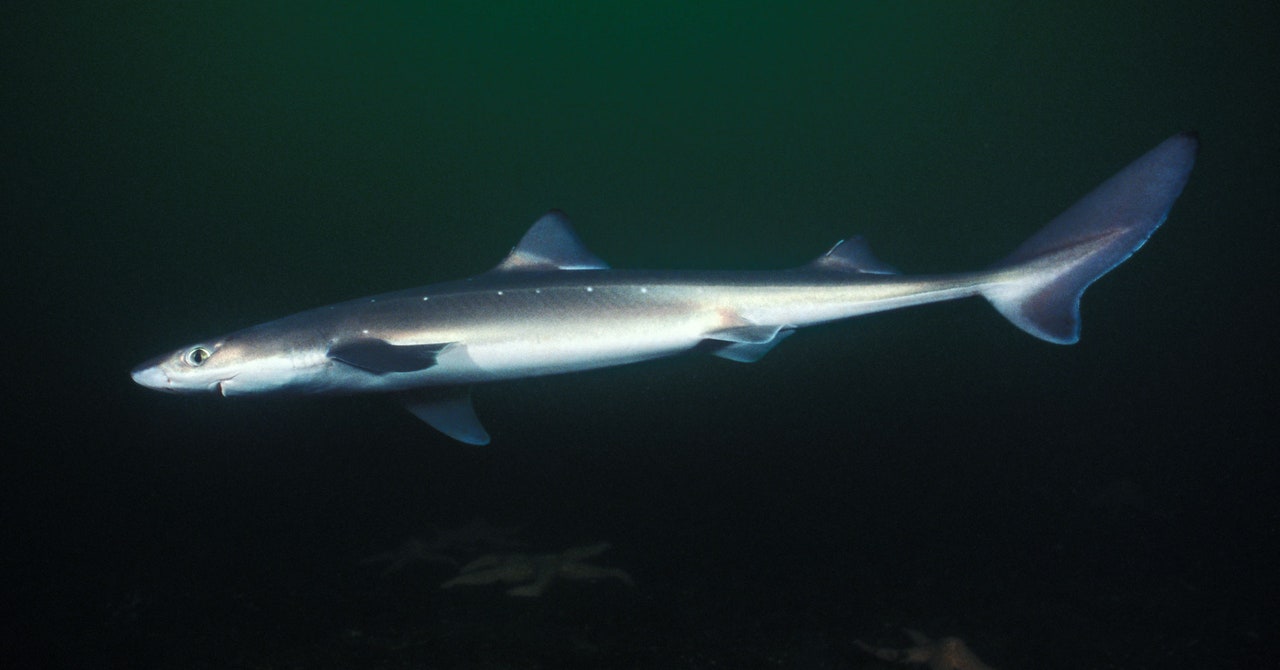
In 1920, Serbian-born inventor Nikola Tesla designed and patented what he called a “valvular conduit”: a pipe whose internal design ensures that fluid will flow in one preferred direction, with no need for moving parts, making it ideal for microfluidics applications, among other uses. According to a recent paper published in the Proceedings of the Royal Society B, the Tesla valve also provides a useful model for how food moves through the digestive system of many species of shark. Based on new CT scans of shark intestines, scientists have concluded that the intestines are naturally occurring Tesla valves.
“It’s high time that some modern technology was used to look at these really amazing spiral intestines of sharks,” said coauthor Samantha Leigh of California State University, Dominguez Hills. “We developed a new method to digitally scan these tissues and now can look at the soft tissues in such great detail without having to slice into them.”
The key to Tesla’s ingenious valve design is a set of interconnected, asymmetric, tear-shaped loops. In his patent application, Tesla described this series of 11 flow-control segments as being made of “enlargements, recessions, projections, baffles, or buckets which, while offering virtually no resistant to the passage of fluid in one direction, other than surface friction, constitute an almost impassable barrier to its flow in the opposite direction.” And because it achieves this with no moving parts, a Tesla valve is much more resistant to the wear and tear of frequent operation.
Tesla claimed that water would flow through his valve 200 times slower in one direction than another, which may have been an exaggeration. A team of scientists at New York University built a working Tesla valve in 2021, in accordance with the inventor’s design, and tested that claim by measuring the flow of water through the valve in both directions at various pressures. The scientists found the water flowed only about two times slower in the nonpreferred direction.
However, flow rate proved to be a critical factor. The valve offered very little resistance at slow flow rates, but once that rate increased above a certain threshold, the valve’s resistance would increase as well, generating turbulent flows in the reverse direction, thereby “plugging” the pipe with vortices and disruptive currents. So it actually works more like a switch, according to coauthor Leif Ristroph, and can also help smooth out pulsing flows, akin to how AC/DC converters turn alternating currents into direct currents. In fact, Ristroph suggested that this may have been Tesla’s intent in designing the valve, given that his biggest claim to fame is inventing both the AC motor and an AC/DC converter.
And now the Tesla valve is providing insight into the unusual structure of shark intestines, thanks to a team of researchers hailing from three universities: CSU, Dominguez Hills; the University of Washington; and UC Irvine.
Sharks are apex predators, feeding on a wide range of species, and are thus important for controlling biodiversity in the larger ecosystem. Most sharks have spiral intestines consisting of a varying number of folds in the intestinal tissue, typically in one of four basic configurations: columnar, scroll, a funnel pointing to the posterior, or a funnel pointing to the anterior. These four types of intestines are usually depicted in 2D sketches that are splayed out in two dimensions after a dissection or imaged as two-dimensional slices through the three-dimensional structure. But that doesn’t give scientists much insight into how the structure works in situ.
Last year, Japanese researchers reconstructed micrographs of histological sections from a species of cat shark into a three-dimensional model, offering “a tantalizing glimpse of the anatomy of a scroll-type spiral intestine,” per the authors of this latest paper. Coauthor Adam Summers, of the University of Washington’s Friday Harbor Labs, and his colleagues decided that CT scanning might accomplish something similar, since the technique involves taking a series of x-ray images from different angles and then combining them into 3D images.


